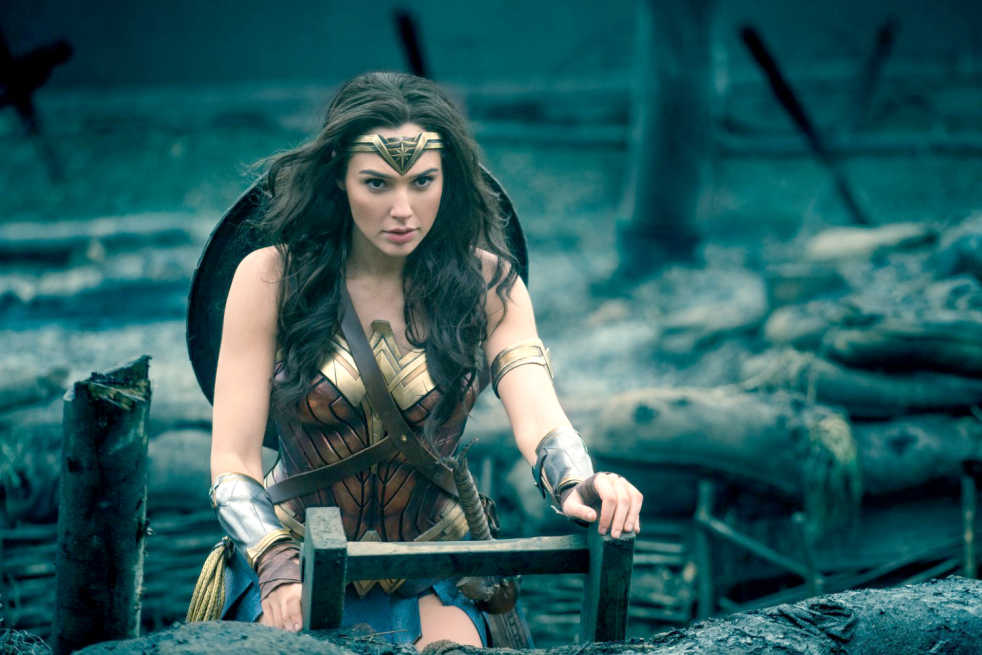Following the critical disappointments “Batman vs. Superman: Dawn of Justice” and “Suicide Squad,” the DC Extended universe needed a win, especially leading up to their “Avengers” equivalent, “Justice League.” Enter Amazon goddess and fearless warrior Wonder Woman, played by Israeli actress Gal Gadot.
Set toward the end of World War I, Princess Diana of Themyscira leaves her homeland with WWI fighter Steve Trevor (Chris Pine, “Star Trek”). A long-held belief on Themyscira maintains that ridding the world of Ares, the God of War, will bring about peace, so Diana seeks to eliminate Ares and travels with Trevor to the front lines to do so.
Joining them is a ragtag team consisting of con artist Sameer (Saïd Taghmaoui, “Three Kings”), Native American smuggler Chief (Eugene Brave Rock, “Batman v. Superman: Dawn of Justice”) and Scottish sniper with PTSD Charlie (Ewen Bremner, “Black Hawk Down”). The group sets out to destroy a horrific chemical weapon created by German general Erich Ludenoff (Danny Huston, “American Horror Story”) and chemist Dr. Isabel Maru (Elena Anaya, “Van Helsing”).
After Trevor prevents Diana from killing Ludenoff at a gala, Diana confronts the general at a military base, convinced that he is Ares and ending him will end the war. When the war continues after his death, Diana is forced to confront how one-dimensional her view of good and evil is in order to defeat the true God of War. “Wonder Woman” is the kind of movie that will leave audiences with the urge to fight something and protect the innocent.
Gadot is fearless and determined as Diana, battling her way through villages and the front lines, all with an almost childlike naivete that she can save the world. She proves herself multiple times over the movie, even as men around her ask her to stay behind or try to keep her back until she earns their respect.
Director Patty Jenkins uses these instances to highlight the disconnect between Diana’s strength and potential and how people viewed women in the early 20th century. However, having Diana be the only woman to positively change the course of the plot (the other Amazons do little to affect the final conflict, and the only other female “good guy” is plucky comic relief) misses opportunities to empower girls of more diverse backgrounds. Despite this shortcoming, the success of “Wonder Woman” paves the way for future female-led superhero movies.
Beneath all the action and witty dialogue, the emotional core of the film is Diana’s character transformation. Upon leaving her homeland, Diana is every bit the idealistic do-gooder that graced the pages of early Golden Age comics, where the distinction between good and evil was clear-cut, and the solution as simple as taking out the main villain.
However, after fighting in World War I and confronting the war god Ares, Diana’s outlook falls more in line with modern superheroes: the lines between good and evil are blurred, even within heroes, but what matters is protecting what one believes in. Such a transformation echoes how comic books themselves have evolved and matured to reflect how people view their heroes.
“Wonder Woman” not only understands what modern audiences want to see — more women, more multifaceted characters — but also that viewers want their heroes to face wrenching sacrifices, even for an ungrateful populace. At the film’s climax, Ares tempts Diana to rule with him over weak-willed humans who commit evil in self-interest regardless of their side. Ultimately, “Wonder Woman” is less about Diana defeating Ares and more about the modern definition of a hero.
